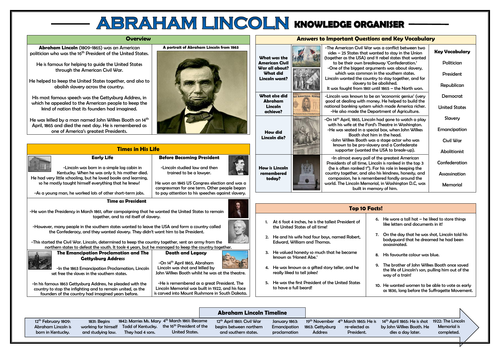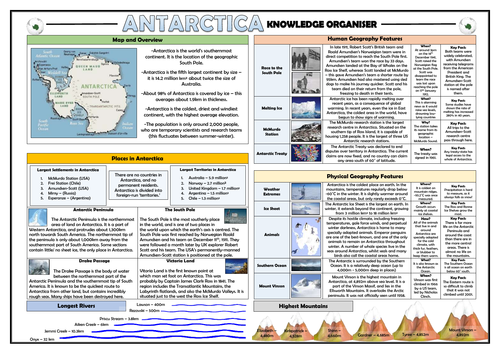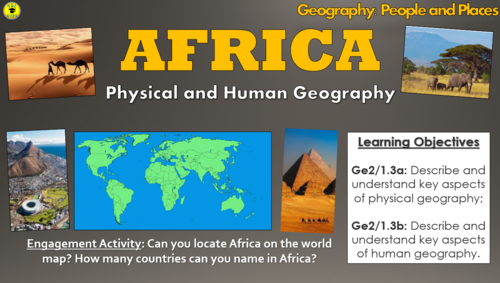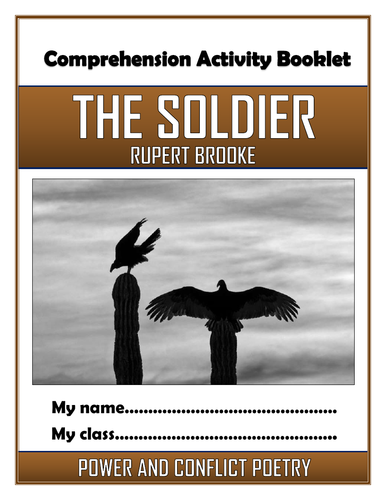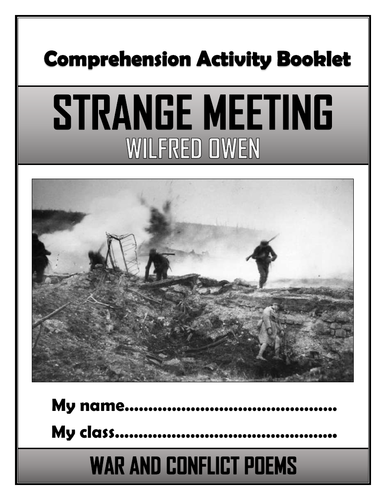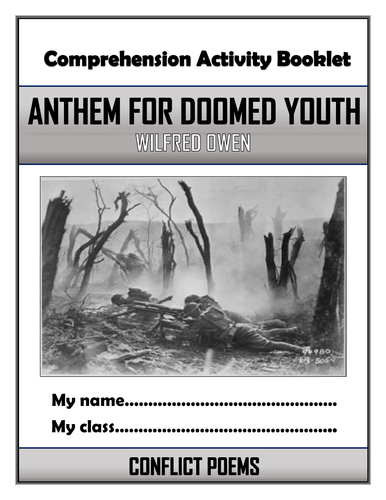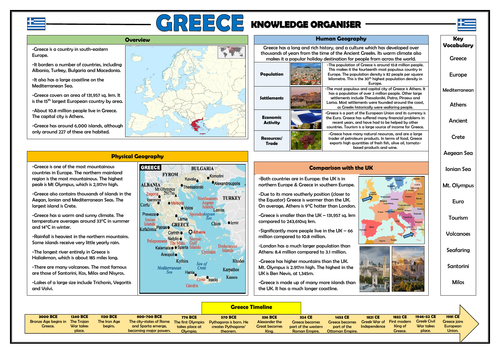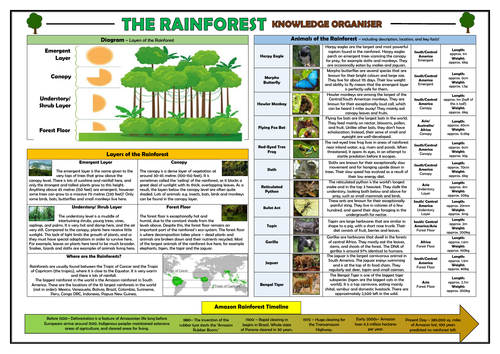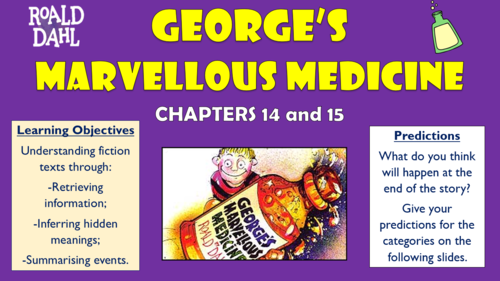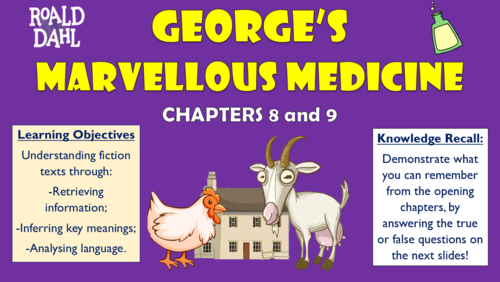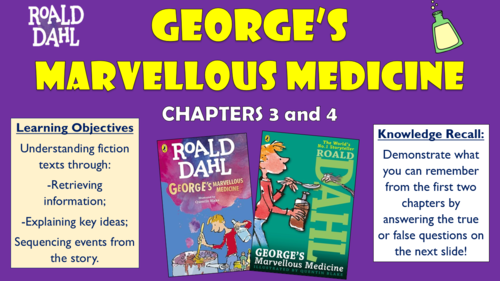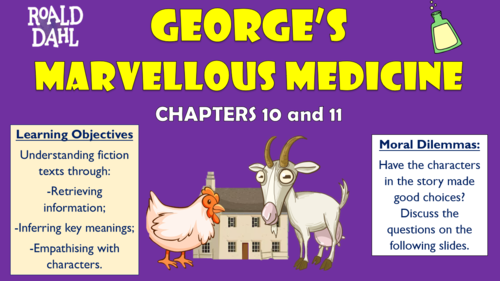
3k+Uploads
2011k+Views
2319k+Downloads
Whole school
Bundle Sale

Roald Dahl Whole Class Reading Bundle!
These whole class reading sessions aim to develop children’s comprehension of several extracts from Roald Dahl texts.
There are three sessions included in total - one session each for the following Roald Dahl texts:
-George’s Marvellous Medicine
-The Twits
-The Magic Finger
Each presentation contains a link to the relevant online chapters (on the first slide). This is followed by a series of activities aiming to develop children’s retrieval, explanation, inference, prediction and summarising skills. It also contains a vocabulary check immediately after the extract is read to clarify any unfamiliar/ difficult language.
The tasks are comprised of quick-check questions, solo thinking, pair/ group discussions and deeper thinking activities.
The sessions are best suited for children in years 2-3, although with minor adaptations it could feasibly be used with slightly younger and older year groups.
This style of whole class reading, in which you are able to dip into a different text each day, is great for broadening the number of texts that children are exposed to and increasing their enthusiasm for reading.
Bundle Sale

KS1 & KS2 Comprehension Activities Huge Booklet Bundle! (aligned with the New Curriculum)
These resource booklets contain a wide range of age-appropriate, engaging, and meaningful comprehension activities for use in guided reading sessions. They are perfect for aiding the progress of children towards meeting the Year 1 through to Year 6 comprehension expectations within the new National Curriculum framework. Children love learning from these resources, whilst they are also of great use to teachers, as there is explicit information within each task regarding which comprehension strands the task is designed to demonstrate. They are also generic enough to ensure that they are appropriate for use with all texts.
The Year 1, Year 2, Year 3, Year 4, Year 5, and Year 6 Booklets (normally 2 pounds each) are all included. I’ve also thrown in a literacy writing mat for free!
Examples of activities within the booklets include:
- Word Tennis - to enable students to demonstrate that they can: ‘Discuss their understanding of new words, and explore the meaning of words in context’
- Conventions Bingo - to enable students to demonstrate that they can: ‘Identify and discuss themes and conventions in writing.’
- Rap Battle - to enable students to demonstrate that they can: ‘Read aloud poems, and perform playscripts.’
-Court Case: Defending a Text - to enable students to demonstrate that they can: ‘Provide reasoned justifications for your views, Explain and discuss and understanding of what has been read, including through presentations and debates, maintaining a focus on topic.’’
Plus many, many more activities (each booklet is around 20 pages in length!)
All images are licensed for commercial use, and are cited on a separate document (included.)
Sale

Teacher Quality Monitoring and Tracking Big Bundle!
Contained in this bundle are all of the teacher performance grids, (lesson observations, book monitoring, and pupil progress) in addition to the teacher quality trackers. Used in combination, these resources enable school leaders and data managers to easily and precisely monitor teacher quality over time.
The Teacher Performance Grids contain:
1.) Observation & Learning Walk Performance Grid
2.) Marking and Feedback Performance Grid
3.) Pupil Progress Performance Grid
For use alongside lesson observations, learning walks, book monitoring, and discussions about pupil progress, these succinct performance grids enable observers to gauge, categorise, and feedback on teaching and learning using OFSTED guidance for effective teaching. The documents provide descriptors of 'outstanding', 'good', 'requires improvement' and 'inadequate' practice within appropriately considered teaching and learning focus areas, for example: Questioning, Positive Feedback, Use of Additional Adults, Noticing Data Trends and Plotting Interventions etc. Schools who opt to grade individual teachers on their performance have noted that these are helpful aids in arriving at an overall judgement.
The Teacher Quality Trackers allow teaching and learning leaders to monitor the quality of teaching across their departments/ schools over time, focusing on the triangulated performance indicators of: Lesson Observations/Learning Walks, Book/Folder Monitoring, and Pupil Progress. Users can easily view changes in individual, department, key stage, and whole school teaching and learning quality over time.
The tools are automatically formatted to colour code entries from the codes 1 (Outstanding = Green) to 4 (Inadequate = Red) Each entry also updates the 'average school performance' table, which in turn alters the line graph showing quality over time. This enables leaders to easily identify trends in performance data. Furthermore, there is also space in which users can give details of CPD sessions and interventions, in order to a provide a foundation to evaluate their impact.
Individual pages are provided for observations, book monitoring, and pupil progress.
'3 captures per year' and '6 captures per year' versions are provided, to allow for schools that measure quality at variable intervals.

African Country Study - Physical and Human Geography!
This interesting and highly-stimulating lesson enables students to create their very own African country geography study presentations. The lesson format and resources enables them to engage with varied geographical concepts including biomes, population, rivers, lakes, mountains, climate, borders and capital cities.
The lesson follows a clear, logical, bite-size learning journey, which guides students towards relevant and constructive learning objectives, and helps them to build their presentations. Over the course of this journey, they:
-Remember key facts about the African continent to contextualise their learning;
-Pick an African nation at random;
-Follow a clear checkist and model example, enabling them to create presentations with the following sections: Physical Geography Key Facts, Human Geography Key Fact, Biomes and Climate, Rivers, Lakes and Mountains, and Capital City.
-Presenting their country study, with reference to clear guidance on effective speaking and listening skills.
-Self-assess their outcomes using the learning objectives.
The lesson benefits from access to atlases and/or web-searching devices.
This lesson resource is made up of a visually engaging whole-lesson PowerPoint presentation (17 slides), the countries for selection, and the checklist.
The resources within this lesson can be easily adapted to suit home/remote learning.

Queen Victoria Knowledge Organiser!
This clear, detailed and visually-appealing resource offers a complete reference point for children learning about Queen Victoria as a part of their history study of ‘Significant Individuals.’ It contains comprehensive sections entitled:
Overview;
Times in Her Life;
Important Vocabulary;
Queen Victoria Timeline;
Answers to the Important Questions;
Top Ten Facts.
The resource is designed to be printed onto A3, and is provided as both a PDF and a Word version (so that you can edit if you want to). All images used are licensed for commercial use.

Abraham Lincoln Knowledge Organiser!
This clear, detailed and visually-appealing resource offers a complete reference point for children learning about Abraham Lincoln, particularly those completing a history study of ‘Significant Individuals.’ It contains comprehensive sections entitled:
Overview;
Times in His Life;
Important Vocabulary;
Abraham Lincoln Timeline;
Answers to the Important Questions;
Top Ten Facts.
The resource is designed to be printed onto A3, and is provided as both a PDF and a Word version (so that you can edit if you want to). All images used are licensed for commercial use.

Antarctica Knowledge Organiser/ Revision Mat!
This clear, detailed and visually-appealing resource offers a complete reference point for students revising knowledge relating to Antarctica, as a part of their study of physical and human geography. It contains comprehensive sections on:
Overview and Map;
Areas and Territories of Antarctica;
Longest Rivers;
Highest Mountains;
Human Geography Features;
Physical Geography Features.
The resource is designed to be printed onto A3, and is provided as both a PDF and a Word version (so that you can edit if you want to). All images used are licensed for commercial use and are cited on a separate document (included). The resource is most suitable for students in KS2 or KS3.

Africa: Physical and Human Geography (People and Places)
This interesting and highly-stimulating lesson enables students to describe and understand the key aspects of physical geography (e.g. climates, vegetation belts, flora, fauna, mountains, and rivers) and human geography (e.g. types of settlement, populations, use of resources, and trade) in the vast and varied continent of Africa. Whilst gaining a wide range of knowledge about the content, students also become familiar with a wide range of vocabulary pertinent to the geography curriculum.
The lesson follows a clear, logical, bite-size learning journey, which guides students towards relevant and constructive learning objectives. Over the course of this journey, they become able to:
Identify Africa on a map, and identify the countries and regions within the continent;
Understand key information about the physical and human geography of the continent, through a fun, interactive quiz;
Retrieve, share, and describe their understanding of the physical and human geography of specific locations in Africa (Sahara Desert, Cape Town, The African Savanna and the Mount Kilimanjaro) through a jigsaw model task;
Complete a case study of the physical and human geography of their own place in Africa, and describe their findings to others;
-Peer assess each others’ descriptions using the learning objectives.
This resource pack includes:
A visually engaging whole-lesson PowerPoint presentation;
Key case-study information sheets on the Sahara Desert, Cape Town, the African Savanna and Mount Kilimanjaro (in both PDF and Word - inside the zip-folder);
A blank case study template.
All images are licensed for commercial use. Note: The final task works best with access to ICT/internet resources.
This resources within this lesson can be easily adapted to suit home/remote learning.

The Soldier - Rupert Brooke - Comprehension Activities Booklet!
This 16-page resource booklet contains a wide range of challenging and engaging comprehension activities for use throughout the reading of Rupert Brooke’s war poem 'The Soldier.’ They are perfect for aiding the progress of students learning poetry either in KS3 and KS4 in preparation for poetry/unseen poetry at GCSE, as the tasks draw on English Literature assessment objectives - suitable for all examining bodies - it is clearly highlighted within each task regarding which assessment strands the task is designed to demonstrate.
The booklet is provided in both Word (to allow for easy editing) and PDF (to ensure for consistency of formatting between computers).
Activities within the booklet include (amongst many others):
‘Analysing Context’ - helping students to ‘Show understanding of the relationships between texts and the contexts in which they were written.’
‘Analysing Subject Matter, Language and Structure’ - to help students to ‘Analyse the language, form and structure used by a writer to create meanings and effects, using relevant subject terminology where appropriate.’
‘Diary Entry’ - to help students to ‘Use a range of vocabulary and sentence structures for clarity, purpose and effect, with accurate spelling and punctuation. Make an informed personal response, recognising that other responses to a text are possible and evaluating these.’
‘The Speaker’ - to help students to ‘Read, understand and respond to texts. Students should be able to: maintain a critical style and develop an informed personal response use textual references, including quotations, to support and illustrate interpretations.’

Strange Meeting - Wilfred Owen - Comprehension Activities Booklet!
This 16-page resource booklet contains a wide range of challenging and engaging comprehension activities for use throughout the reading of Wilfred Owen’s WWI poem 'Strange Meeting.’ They are perfect for aiding the progress of students learning poetry either in KS3 and KS4 in preparation for poetry/unseen poetry at GCSE, as the tasks draw on English Literature assessment objectives - suitable for all examining bodies - it is clearly highlighted within each task regarding which assessment strands the task is designed to demonstrate.
The booklet is provided in both Word (to allow for easy editing) and PDF (to ensure for consistency of formatting between computers).
Activities within the booklet include (amongst many others):
‘Analysing Context’ - helping students to ‘Show understanding of the relationships between texts and the contexts in which they were written.’
‘Analysing Subject Matter, Language and Structure’ - to help students to ‘Analyse the language, form and structure used by a writer to create meanings and effects, using relevant subject terminology where appropriate.’
‘Diary Entry’ - to help students to ‘Use a range of vocabulary and sentence structures for clarity, purpose and effect, with accurate spelling and punctuation. Make an informed personal response, recognising that other responses to a text are possible and evaluating these.’
‘The Speaker’ - to help students to ‘Read, understand and respond to texts. Students should be able to: maintain a critical style and develop an informed personal response use textual references, including quotations, to support and illustrate interpretations.’

Anthem for Doomed Youth Comprehension Activities Booklet!
This 16-page resource booklet contains a wide range of challenging and engaging comprehension activities for use throughout the reading of Wilfred Owen’s power and conflict poem 'Anthem for Doomed Youth.’ Teachers have found them particularly useful throughout teaching, or for exam revision or guided reading sessions. They are perfect for aiding the progress of students towards meeting the key English Literature assessment objectives - suitable for all examining bodies. Students have found these resources extremely engaging, and it is clearly highlighted within each task regarding which assessment strands the task is designed to demonstrate.
It is provided in both Word (to allow for easy editing) and PDF (to ensure for consistency of formatting between computers).
Activities within the booklet include (amongst many others):
‘Analysing Context’ - helping students to ‘Show understanding of the relationships between texts and the contexts in which they were written.’
‘Analysing Subject Matter, Language and Structure’ - to help students to ‘Analyse the language, form and structure used by a writer to create meanings and effects, using relevant subject terminology where appropriate.’
‘Diary Entry’ - to help students to ‘Use a range of vocabulary and sentence structures for clarity, purpose and effect, with accurate spelling and punctuation. Make an informed personal response, recognising that other responses to a text are possible and evaluating these.’
‘The Speaker’ - to help students to ‘Read, understand and respond to texts. Students should be able to: maintain a critical style and develop an informed personal response use textual references, including quotations, to support and illustrate interpretations.’

Greece Knowledge Organiser - KS2 Geography Place Knowledge!
This clear, detailed and visually-appealing resource offers a complete reference point for students revising knowledge relating to Greece, as a part of their study of place, human and physical geography. It contains comprehensive sections on:
Overview and Maps;
Physical Geography;
Human Geography;
Comparison with the United Kingdom;
Greece Timeline;
Key Vocabulary.
The organiser is designed to help children to learn the relevant place, human and physical geography knowledge from the KS2 Geography National Curriculum: -‘understand geographical similarities and differences through the study of human and physical geography of a region of the United Kingdom and a region in a European country’
-‘physical geography, including: climate zones, rivers, mountains, volcanoes and earthquakes’
-‘human geography, including: types of settlement and land use, economic activity
including trade links, and the distribution of natural resources including energy.’
The resource is designed to be printed onto A3, and is provided as both a PDF and a Word version (so that you can edit if you want to). All images used are licensed for commercial use and are cited on a separate document (included).

Rainforests KS2 Knowledge Organiser!
This clear, detailed and visually-appealing resource offers a complete reference point for students learning or revising knowledge relating to rainforests. It contains comprehensive sections on:
The different layers of the rainforest (emergent, canopy, understory/shrub, forest floor) and diagram;
Information about where rainforests can be found in the world;
Animals of the rainforest (including distribution, images, habitat, size/weight, and key facts);
Timeline of deforestation;
The resource is designed to be printed onto A3, and is provided as both a PDF and a Word version (so that you can edit if you want to). All images used are licensed for commercial use and are cited on a separate document (included). The resource is most suitable for students in KS2 or KS3.

Dulce et Decorum Est - Wilfred Owen - Comprehension Activities Booklet!
This 16-page resource booklet contains a wide range of challenging and engaging comprehension activities for use throughout the reading of Wilfred Owen’s World War I poem ‘Dulce et Decorum Est.’ Teachers have found the activities particularly useful throughout teaching, or for exam revision or guided reading sessions. They are perfect for aiding the progress of students towards meeting the key English Literature assessment objectives - suitable for all examining bodies. Students have found these resources extremely engaging, and it is clearly highlighted within each task regarding which assessment strands the task is designed to demonstrate.
It is provided in both Word (to allow for easy editing) and PDF (to ensure for consistency of formatting between computers).
Activities within the booklet include (amongst many others):
‘Analysing Context’ - helping students to ‘Show understanding of the relationships between texts and the contexts in which they were written.’
‘Analysing Subject Matter, Language and Structure’ - to help students to ‘Analyse the language, form and structure used by a writer to create meanings and effects, using relevant subject terminology where appropriate.’
‘Diary Entry’ - to help students to ‘Use a range of vocabulary and sentence structures for clarity, purpose and effect, with accurate spelling and punctuation. Make an informed personal response, recognising that other responses to a text are possible and evaluating these.’
‘The Speaker’ - to help students to ‘Read, understand and respond to texts. Students should be able to: maintain a critical style and develop an informed personal response use textual references, including quotations, to support and illustrate interpretations.’

George's Marvellous Medicine - Chapters 12 and 13 - Double Lesson!
This engaging and thought-provoking double-lesson resource aids students in developing a secure understanding of chapters 12 and 13 of Roald Dahl’s ‘George’s Marvellous Medicine.’ The chapters covered in these lessons are ‘Marvellous Medicine Number Two’ and ‘Marvellous Medicine Number 3.’
The lessons are guided by a comprehensive and colourful PowerPoint presentation, and enables students to understand the text through:
-Retrieving information;
-Inferring hidden meanings;
-Making predictions.
The sessions include a range of retrieval, vocabulary, inference, explanation and deeper thinking activities. A clear, colourful and comprehensive PowerPoint presentation guides students through the learning.
There’s a lot in the session (17 slides in total) so I would recommend breaking into two lessons. The lessons are most suitable for children in upper key stage 1 or lower key stage 2, (they have been used in the past with children in years 2 and 3) but they could also be adapted for slightly older and younger year groups.

George's Marvellous Medicine - Chapters 14 and 15 - Double Lesson!
This engaging and thought-provoking double-lesson resource aids students in developing a secure understanding of chapters 14 and 15 of Roald Dahl’s ‘George’s Marvellous Medicine.’ The chapters covered in these lessons are ‘Marvellous Medicine Number Four’ and ‘Goodbye Grandma.’
The lessons are guided by a comprehensive and colourful PowerPoint presentation, and enables students to understand the text through:
-Retrieving information;
-Inferring hidden meanings;
-Summarising events.
The sessions include a range of retrieval, vocabulary, inference, explanation and deeper thinking activities. A clear, colourful and comprehensive PowerPoint presentation guides students through the learning. A storyboard template is also provided for the creative activity (in both Word and PDF).
There’s a lot in the session (18 slides in total) so I would recommend breaking into two lessons. The lessons are most suitable for children in upper key stage 1 or lower key stage 2, (they have been used in the past with children in years 2 and 3) but they could also be adapted for slightly older and younger year groups.

George's Marvellous Medicine - Chapters 8 and 9 - Double Lesson!
This engaging and thought-provoking double-lesson resource aids students in developing a secure understanding of chapters 8 and 9 of Roald Dahl’s ‘George’s Marvellous Medicine.’ The chapters covered in these lessons are ‘The Brown Hen’ and ‘'The Pig, the Bullocks, the Sheep, the Pony and the Nanny-goat.’
The lessons are guided by a comprehensive and colourful PowerPoint presentation, and enables students to understand the text through:
-Retrieving information;
-Inferring hidden meanings;
-Analysing language.
The sessions include a range of retrieval, vocabulary, inference, explanation and deeper thinking activities. A clear, colourful and comprehensive PowerPoint presentation guides students through the learning.
There’s a lot in the session (19 slides in total) so I would recommend breaking into two lessons. The lessons are most suitable for children in upper key stage 1 or lower key stage 2, (they have been used in the past with children in years 2 and 3) but they could also be adapted for slightly older and younger year groups.

George's Marvellous Medicine - Chapters 3 and 4 - Double Lesson!
This engaging and thought-provoking double-lesson resource aids students in developing a secure understanding of the chapters 3 to 4 of Roald Dahl’s ‘George’s Marvellous Medicine.’ The chapters covered in these lessons are ‘George Begins to Make the Medicine’ and ‘Animal Pills.’
The lessons are guided by a comprehensive and colourful PowerPoint presentation, and enables students to understand the text through:
-Retrieving information;
-Explaining key meanings;
-Sequencing events.
The sessions include a range of retrieval, vocabulary, inference, explanation and deeper thinking activities. A clear, colourful and comprehensive PowerPoint presentation guides students through the learning.
There’s a lot in the session (18 slides in total) so I would recommend breaking into two lessons. The lessons are most suitable for children in upper key stage 1 or lower key stage 2, (they have been used in the past with children in years 2 and 3) but they could also be adapted for slightly older and younger year groups.

George's Marvellous Medicine - Chapters 10 and 11 - Double Lesson!
This engaging and thought-provoking double-lesson resource aids students in developing a secure understanding of chapters 10 and 11 of Roald Dahl’s ‘George’s Marvellous Medicine.’ The chapters covered in these lessons are ‘A Crane for Grandma’ and 'Mr Kranky’s Great Idea.’
The lessons are guided by a comprehensive and colourful PowerPoint presentation, and enables students to understand the text through:
-Retrieving information;
-Inferring hidden meanings;
-Empathising with characters.
The sessions include a range of retrieval, vocabulary, inference, explanation and deeper thinking activities. A clear, colourful and comprehensive PowerPoint presentation guides students through the learning.
There’s a lot in the session (19 slides in total) so I would recommend breaking into two lessons. The lessons are most suitable for children in upper key stage 1 or lower key stage 2, (they have been used in the past with children in years 2 and 3) but they could also be adapted for slightly older and younger year groups.

George's Marvellous Medicine - Chapters 1 and 2 - Double Lesson!
This engaging and thought-provoking double-lesson resource aids students in developing a secure understanding of the chapters 1 to 2 of Roald Dahl’s 'George’s Marvellous Medicine.’ The chapters covered in these lessons are ‘Grandma’ and ‘The Marvellous Plan.’
The lessons are guided by a comprehensive and colourful PowerPoint presentation, and enables students to understand the text through:
-Making predictions;
-Retrieving information;
-Inferring and deducing hidden meanings.
The sessions include a range of retrieval, vocabulary, inference, explanation and deeper thinking activities. A clear, colourful and comprehensive PowerPoint presentation guides students through the learning. A worksheet/ template is also provided for the creative medicine activity (in both Word and PDF format).
There’s a lot in the session (20 slides in total) so I would recommend breaking into two lessons. The lessons are most suitable for children in upper key stage 1 or lower key stage 2, (they have been used in the past with children in years 2 and 3) but they could also be adapted for slightly older and younger year groups.






